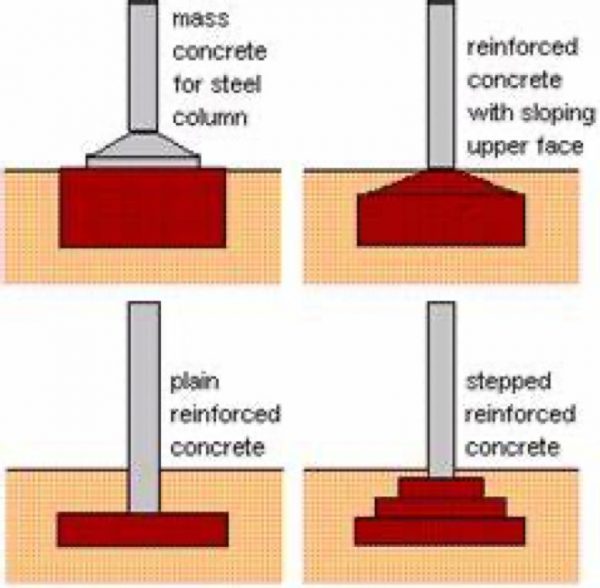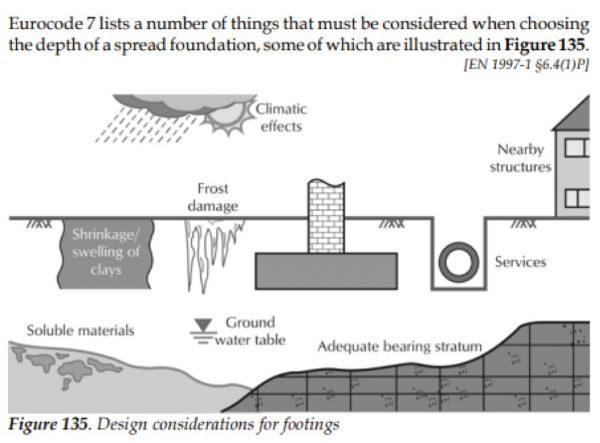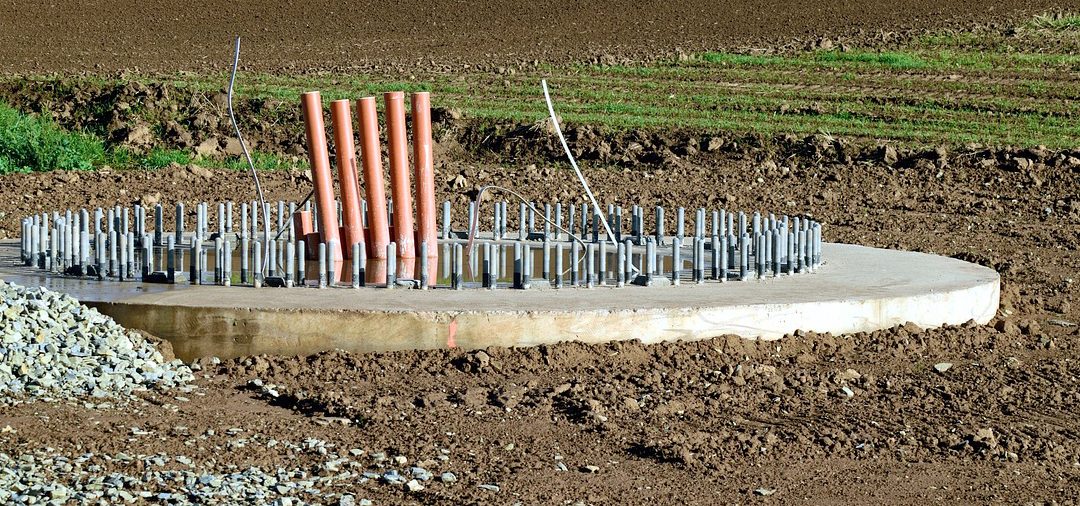The G&W Guide to… Traditional Footings
Geoenvironmental • Geotechnical
Traditional footings are a group of foundation types that involve digging a void in the ground, installing reinforcement where required, pouring in concrete and building from the solid base this creates.
Traditional footing types
There are four main types of traditional footings:

- Pads (isolated squares/rectangles of concrete)
- Strip (connected lengths of footings under main load bearing wall)
- Sloped (not commonly used)
- Stepped foundations (brick/concrete) – usually found in old Victorian properties in London (brick corbels).
Foundation design
The size and depth at which you form the footing is based on the Site Investigation and site conditions, and can be affected by the quality of such investigation (volume change potential/soil strengths) and the proposed development. There is a mass of background information in the previous blogs listed below:
The G&W Guide to… Poor Site Investigation
The G&W Guide to… Sample Disturbance
The G&W Guide to… Site Investigation Theory
A good overview of the factors affecting foundation depth is given below.

The size and depth of traditional foundations is also affected by the proposed development. For example, if you have a thin capping of gravels over soft clays, then it may be more beneficial to keep foundations shallow and thin to get the best bearing/settlement ratios.
Should you have soft to firm clays, then foundations may need to be widened at shallow depth to achieve the right bearing/settlement ratios, or could be deepened.
Total settlement on these types of foundations is generally limited to 25mm in the whole, although we do wonder if this could be adapted to make things more sustainable. Differential settlements along a foundation line or between pads is also a consideration.
The Site Investigation factor
Getting the site investigation right is key. For example, using the wrong Site Investigation kit could underestimate the strength of materials at shallow depth and mean deepening of footings where it is not necessary.
- Unexpected ingress of groundwater can also cause pit instability, base softening and extra dewatering costs
- Spending less on geotechnical classification testing could mean adopting a higher volume change potential in the soils, causing a deepening of the footing
- The deeper and wider the footings, the more waste and more concrete used, and potentially the more re-enforcement required to manage soil movements. This is why it generally becomes most cost effective to consider alternative foundation solutions (we will cover this in detail in future blogs) when traditional footing depths are in excess of 2.0 – 2.5m bgl.
The Ground & Water difference
Making life more cost effective and sustainable for you, is where Ground & Water’s Site Investigation skills and in house software will help.
We can use our Site Investigation knowledge to get the correct/best answer from the ground. This ensures you’re not deepening or widening foundations when it is not necessary. Or you don’t encounter unexpected groundwater.
We can also use our in-house software to analyse total and differential settlement, to give more/better data to your structural engineers to see if they can design out effects in the structure. This could be via analysing different widths of strip footings or sizes of pads.
